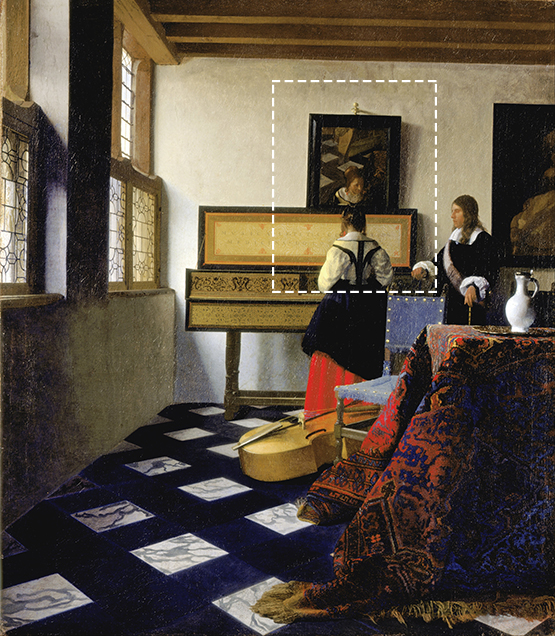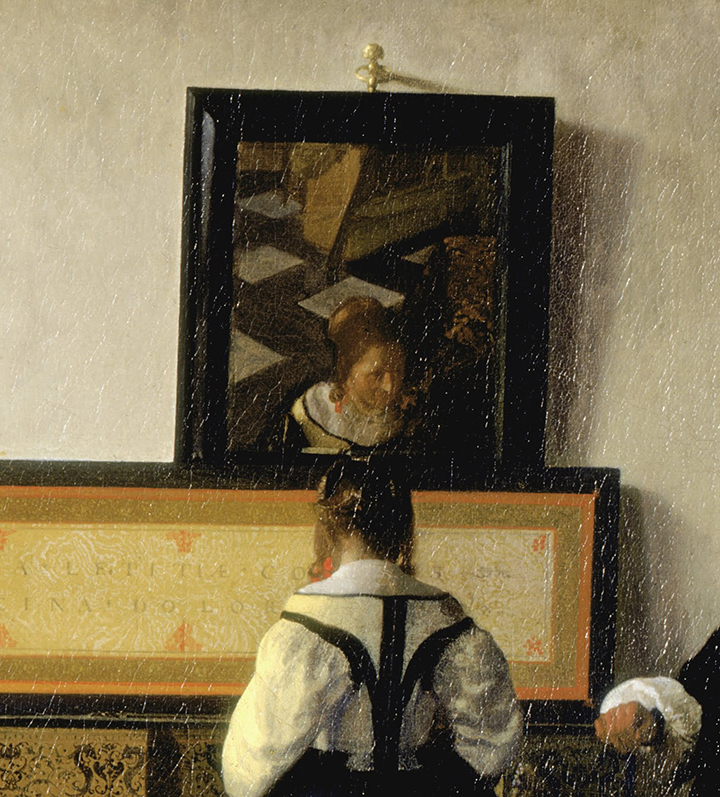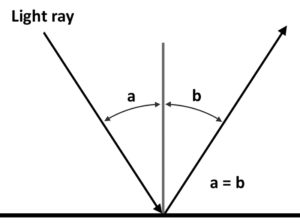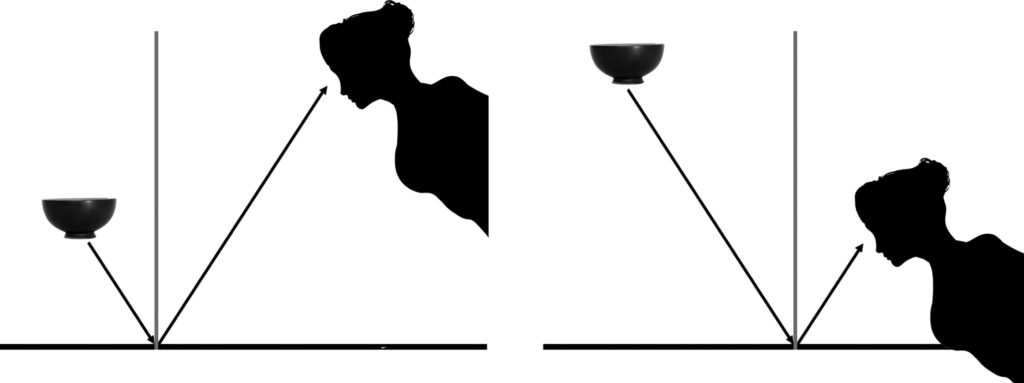Representing mirror reflections is a tricky business in all visual arts. Nowadays, we can use 3D software to calculate reflections. But before CG was available, any mirror reflections in animation, drawings, and paintings had to be figured out by the artist, and matching the subject with its reflection was solely the artist’s responsibility.
We see a classic example of a mirror reflection mismatch in “The Music Lesson,” a painting by Dutch artist Johannes Vermeer. The woman at the piano is facing straight ahead, yet her reflection looks to her right. Also, for the viewer to see the woman’s head in the mirror, the mirror would have to be tilted downward far more than is shown in the painting.


While that false reflection is very likely due to an artistic decision by Vermeer, it would not fly in modern computer animation.
The physics of reflection
Reflections occur because of the way light bounces off smooth, shiny surfaces. A light ray bounces off such a surface at the same angle at which it strikes the surface.

When our eyes are along the line of the bounce angle, we can see the reflected object. It doesn’t matter how close or far we are from the surface in comparison to the distance of the reflected object. All that matters is that we’re along the light ray’s line.

CG software calculates these bounce lines automatically. If the camera is along the light ray’s sight line, then the camera sees the reflection. If it isn’t along that line, the camera doesn’t see it.
In physics, the study of light and reflections is part of the field of optics. Learning these basics of optics can help you get the reflections you need to tell your story in animation.
You can learn more about how to set up reflections in the Light and Color chapter of Physics for Animators.
